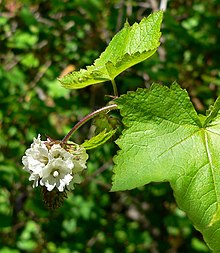Sidalcea
| Sidalcea | |
|---|---|
 |
|
| Sidalcea malachroides | |
| Scientific classification | |
| Kingdom: | Plantae |
| Clade: | Angiosperms |
| Clade: | Eudicots |
| Clade: | Rosids |
| Order: | Malvales |
| Family: | Malvaceae |
| Subfamily: | Malvoideae |
| Tribe: | Malveae |
| Genus: |
Sidalcea A. Gray ex Benth. |
| Species | |
|
See text. |
|
See text.
Sidalcea is a genus (approx. 25 species) of the botanical family Malvaceae. It contains several species of flower known generally as checkerblooms or checkermallows, or prairie mallows in the United Kingdom. They can be annuals or perennials, some rhizomatous. They are native to West and Central North America.
In mid- to late summer the clumps of toothed basal leaves produce erect flowering stems, with 5-petalled mallow-type flowers in terminal racemes, in shades of pink, white and purple.
Sidalcea is generally diploid (2n = 20), but polyploidy (4n, 6n) also occurs.
Annuality appears to have evolved multiple times (4+) within this genus, although an ancestral annual state with annual paraphyly is also possible. Further, evolution rates within annual Sidalcea lineages appear to be faster than those of perennial lineages, at least when examining nuclear ribosomal DNA (internal and external transcribed spacer regions).
Selected species:
(A = annual, P = perennial)
Garden cultivars are hybrids between S. candida and S. malviflora. The cultivars "Elsie Heugh" and "William Smith" have gained the Royal Horticultural Society's Award of Garden Merit.
Sidalcea hirtipes, Clatsop County, Oregon
Sidalcea malviflora, Bay Area, California
...
Wikipedia
